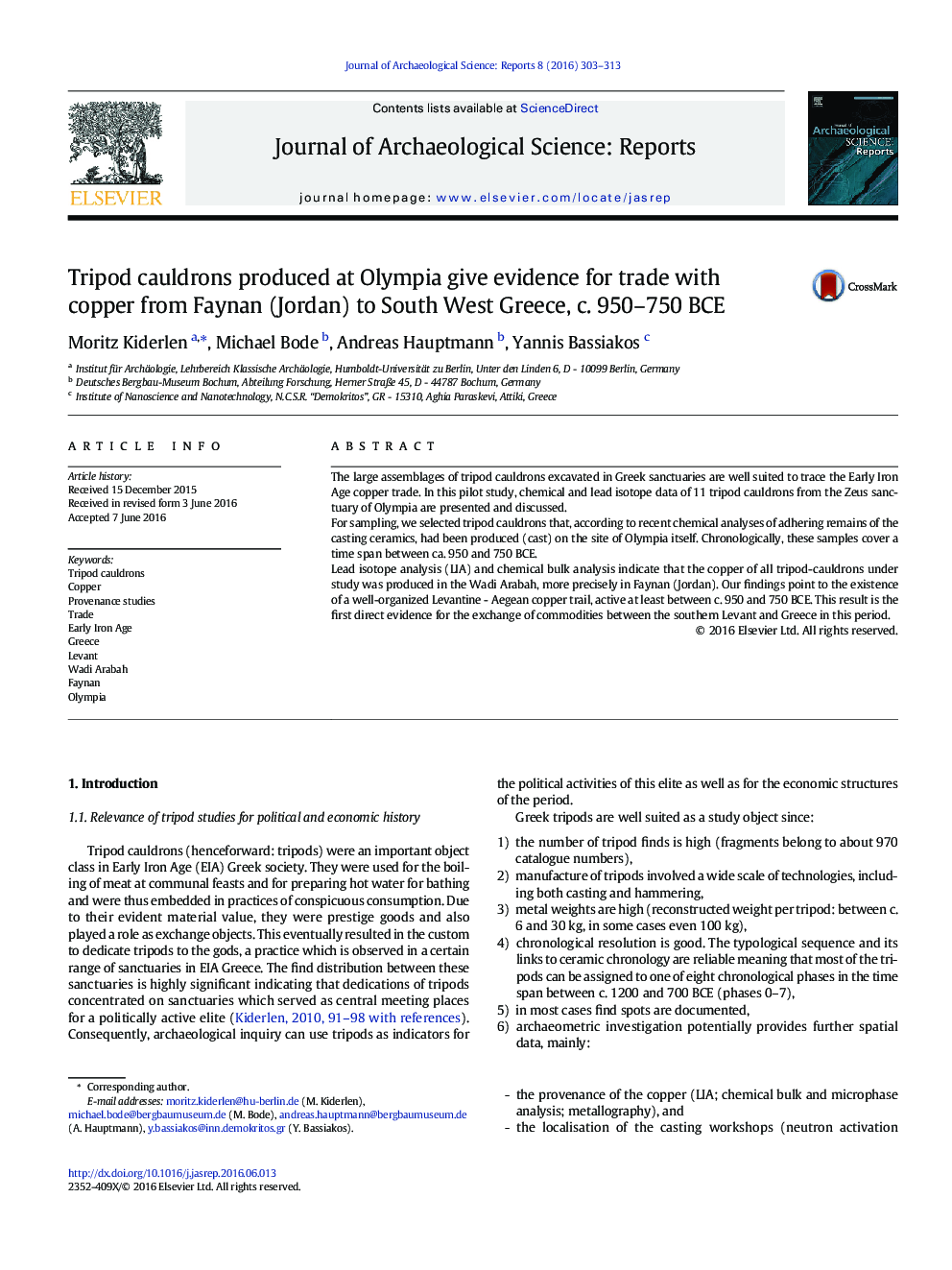| Article ID | Journal | Published Year | Pages | File Type |
|---|---|---|---|---|
| 7445538 | Journal of Archaeological Science: Reports | 2016 | 11 Pages |
Abstract
Lead isotope analysis (LIA) and chemical bulk analysis indicate that the copper of all tripod-cauldrons under study was produced in the Wadi Arabah, more precisely in Faynan (Jordan). Our findings point to the existence of a well-organized Levantine - Aegean copper trail, active at least between c. 950 and 750Â BCE. This result is the first direct evidence for the exchange of commodities between the southern Levant and Greece in this period.
Related Topics
Social Sciences and Humanities
Arts and Humanities
History
Authors
Moritz Kiderlen, Michael Bode, Andreas Hauptmann, Yannis Bassiakos,
